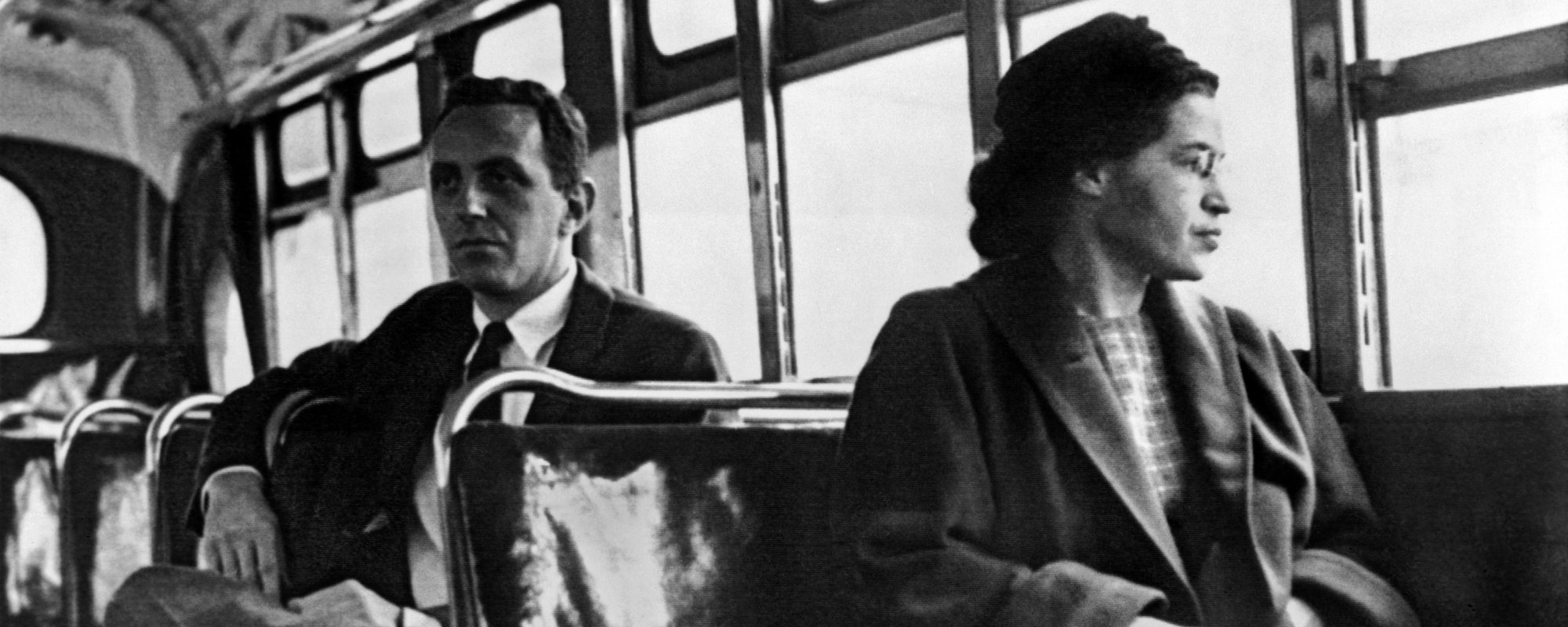Rosa Parks’ name is often spoken in conjunction with the Civil Rights Movement. Obviously, she is most famous for refusing to give up her seat prior to the Montgomery Bus Boycott. That is not all she did.
Videos by Rare
That incident occurred on December 1, 1955 when Parks rejected the demand of driver James F. Blake to move out of her seat once the ‘White’ section was filled. She was not the first person to resist the bus segregations, a common misconception. She was made the face of the movement by the NAACP as her court challenge became a national lightning rod.
However, there’s much more to know about the activist and historical powerhouse.
Rosa Parks was an activist
Prior to the Montogomery boycott, she was already a Civil Rights activist. She’d been a member of the National Association for the Advancement of Colored People since 1943, nearly a decade prior to her arrest. Within the organization, she worked as a secretary.
She was tired of the Bullshit
In the incident that Parks is most commonly known for, she refused to give her bus seat to a white man who wanted hit since the bus was full. The city buses, like other things in society, were divided. Bus segregation laws stated that black passengers must give up their seats to white passengers, should the situation arise.
She’d had a long day at her job at the department store and had mistakenly gotten on a bus driven by a bus driver she at times avoided, James Blake. He had a reputation for treating black passengers without respect. For example, the time he forced her off of the bus after she’d paid her fare because he wanted her to enter the bus through the back door.
She’d decided not to ride his bus again.
On the day of her arrest, she hadn’t even noticed Blake. Had she noticed, she would have taken a different bus. And when she was asked to give up her seat, when she was already sitting in the area segregated for African Americans, not the “whites only” section that day and was still asked to give up the seat she’d reached her limit.
She said she was “..no more tired than I usually was at the end of a working day. I was not old, although some people have an image of me as being old then. I was forty-two. No, the only tired I was, was tired of giving in”.
Her Actions Sparked the Boycott
Park’s actions were not a statement to start the boycott, she was simply trying to get home. However, after her arrest on December 1, 1955, she was taken to jail and later bailed out by a local civil rights leader. Shortly afterward, the Montgomery Bus Boycott started and Parks she spent time working as a dispatcher and arranging carpool rides in Alabama. The boycott lasted from December 5, 1955, to December 20, 1956, and was named one of the largest demonstrations against segregation laws. Rosa Parks and over 100 others were arrested during the process. In November of 1956, the Supreme Court ruled that segregation on public buses was unconstitutional, and brought the boycott to an end.
She Worked For a Congressman
After the Boycott, Rosa Parks and her husband lost their jobs (she was a seamstress at a department store) because of the boycotts. They received unending death threats and threatening phone calls. So, they relocated to Detroit. In Detroit, she worked for US Representative John Conyer’s congressional office. She also served on the board of Planned Parenthood.
Open Casket in Washington, DC
When Rosa Parks died at the ate of 92, an open casket memorial was held for her in Washington, DC at the capitol. Over 50,000 people showed up to see the first woman to receive this tribute. This tradition is usually saved for military leaders and statesmen. She was buried with her mother and husband at Detroit’s Woodlawn Cemetery, which was later renamed the Rosa L. Parks Freedom Chapel.
Another First
In 2013, Parks was further honored at the US Capitol with a life-size statue, making her the first black woman to be honored in that way. President Barck Obama unveiled the statue saying, “In a single moment, with the simplest of gestures, she helped change America and change the world. . . . And today, she takes her rightful place among those who shaped this nation’s course.”
The Words She Left Behind
In 1992 Rosa Parks: My Story, Park’s autobiography was published. Three years later her memoir Quiet Strength was published, focusing on the beliefs that got her through living in the segregated South.
Awards and Recognition
Parks has received countless accolades for her Civil Rights works. The NAACP awarded her the Martin Luther King Jr. Award and the Spingarn Medal.
In 1996, she was awarded the Presidential Medal of Freedom by President Bill Clinton and the Congressional Gold Medal, two of the highest executive and legislative branch recognitions.
Rosa Parks Museum
Troy University created the Rosa Parks Museum in 2000. It is located at the site of her arrest in downtown Montgomery, Alabama. Rosa Parks Circle, a 3.5-acre park was designed for her in Grand Rapids, Michigan by Maya Lin, who is known for designing Washington, D.C.’s Vietnam War Memorial.
Commemorative Stamp
On what would have been Parks’ 100th birthday, in February 2013, a commemorative stamp was pressed by the U.S. Postal Service. It’s called the “Rosa Parks Forever” stamp.



